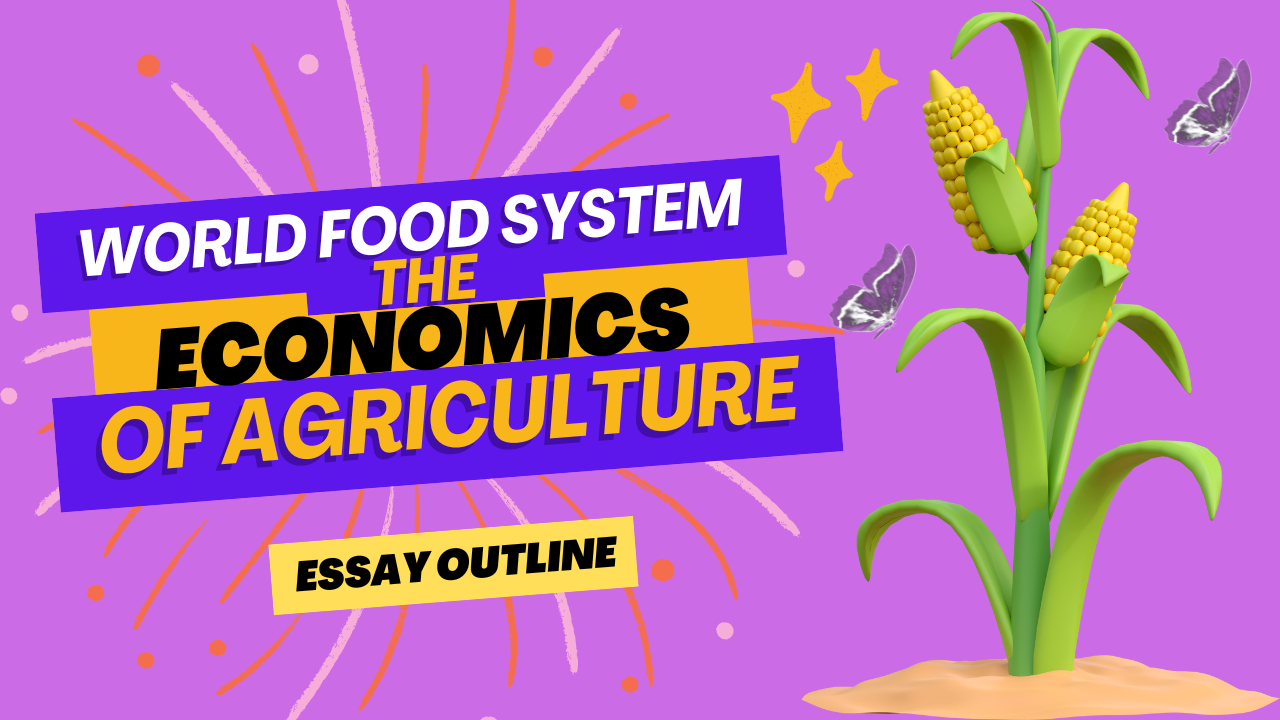WORLD FOOD SYSTEM: THE ECONOMICS OF AGRICULTURE
I. Introduction
A. Definition of World Food Systems
B. Importance of Agriculture in Global Economics
C. Overview of the Essay’s Structure
II. Historical Perspective of Agriculture and Economics
A. Early Agricultural Practices and Economic Impacts
B. Industrial Revolution and Agricultural Economics
C. Technological Advancements and Agricultural Productivity
III. Components of World Food Systems
A. Production:
1. Types of Agriculture (Subsistence, Commercial, Industrial)
2. Impact of Technology on Agricultural Production (GMOs, Machinery)
B. Distribution:
1. Global Trade and Agricultural Markets
2. Supply Chains and Logistics
C. Consumption:
1. Food Consumption Patterns
2. Impact of Economic Factors on Food Consumption
IV. Economics in Agricultural Systems
A. Market Forces:
1. Price Elasticity: Understanding the Sensitivity of Agricultural Products to Price Changes
2. Global Market Integration: Impact on Local Farmers and Economies
3. Role of Speculation: Effects on Agricultural Commodity Prices
B. Government Policies:
1. Trade Agreements and Tariffs: Influence on Agricultural Exports and Imports
2. Farm Subsidies: Types, Effects on Production, and Global Trade Imbalances
3. Agricultural Insurance Schemes: Mitigating Risks and Economic Stability for Farmers
C. Environmental Impact:
1. Land Degradation and Economic Costs: Effects on Agricultural Productivity
2. Water Scarcity and Agriculture: Economic Implications and Sustainable Solutions
3. Biodiversity Loss: Economic Consequences for Agricultural Systems and Food Security
D. Labor Economics:
1. Farm Labor Market Dynamics: Impact of Supply and Demand on Wages
2. Migrant Workers and Agriculture: Economic Contributions and Challenges
3. Technological Unemployment: Effects on Rural Communities and Labor Economics
E. Value Chains and Agribusiness:
1. Vertical Integration in Agriculture: Economic Impacts on Smallholder Farmers
2. Agro-processing and Added Value: Economic Benefits and Market Opportunities
3. Retail and Consumer Trends: Influence on Agricultural Economics and Product Demand
V. Case Studies and Examples
A. Green Revolution in India: Economic Impact on Agriculture
B. Subsidies in the United States: Effects on Agricultural Economy
C. China’s Agricultural Policies: Economic Transformation and Global Impact
VI. Challenges and Future Outlook
A. Climate Change and Agriculture
B. Globalization and its Impact on Food Systems
C. Technology and the Future of Agricultural Economics
VII. Conclusion
A. Recap of Key Points
B. Emphasize the Significance of Economics in World Food Systems
C. Call to Action or Suggestions for Further Research

